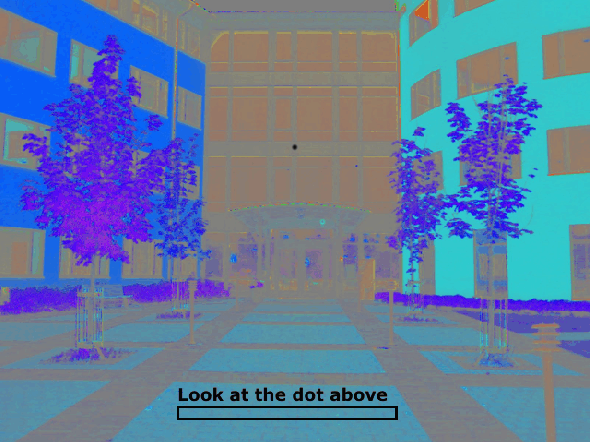The color we “see” on the buildings for that brief second is a visual phenomenon referred to as a negative afterimage. As the topic of negative afterimages is very complex, let us simplify the key points to facilitate comprehension. Our eyes contain photoreceptors (cones and rods) and “there are 3 types of color receptors (cones) that are most sensitive to either red, blue or green” (Washington.edu, n.d). [showmyads]When you stare at a particular color for too long, these receptors get “tired” or “fatigued.” In the case of the picture above, the cone cells in our eyes that respond primarily to the color blue become overstimulated by the intense blue hue of the first image and subsequently lose sensitivity. However the cones that respond primarily to red and green are, more or less, still fresh. So when the picture switches to black and white, the blue cones can only send out a weak signal while the red and green cones send out strong signals. The fact that the color photoreceptors are not in balance results in our seeing the negative afterimages on the walls of the buildings.
Related articles
- Four Cool Facts About Your Cat’s Eyes (catster.com)
- Potential Target For Treatment Of Retinitis Pigmentosa (medicalnewstoday.com)



